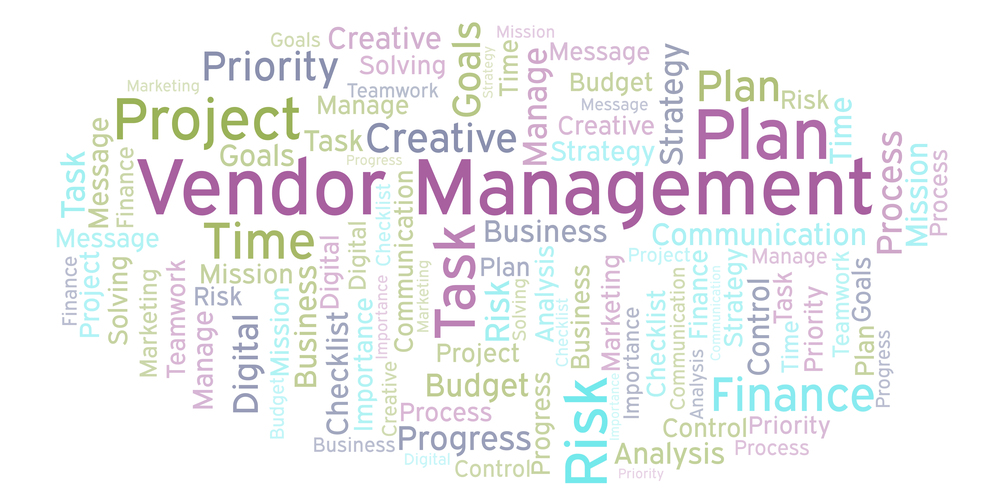
Protecting Your Business from Vendor Vulnerabilities.
Third-Party Risk Management
Third-Party Risk Management: How to Protect Your Business from Vendor Threats
Third-party risk management is a critical component of modern business security. Every company relies on external vendors, suppliers, and service providers to enhance operations. However, these relationships introduce potential cybersecurity vulnerabilities. Without proper safeguards, businesses may face data breaches, compliance violations, and financial losses.
A 2024 IBM report revealed that nearly 60% of data breaches originate from third-party vulnerabilities. These incidents highlight the urgent need for a structured third-party risk management strategy. Businesses that fail to secure vendor relationships expose themselves to severe reputational and operational risks.
Regulatory bodies such as the Federal Financial Institutions Examination Council (FFIEC) and the U.S. Securities and Exchange Commission (SEC) emphasize the need for financial institutions to implement third-party risk management programs. According to the National Institute of Standards and Technology (NIST), businesses must establish continuous monitoring practices to prevent third-party-related cyber threats.
This blog explores why third-party risk management matters, the biggest threats businesses face, and effective strategies for securing vendor partnerships.
Why Third-Party Risk Management Is Essential for Business Security
Companies depend on external providers for cloud storage, IT services, software solutions, and operational support. While these partnerships improve efficiency, they also create new entry points for cybercriminals. Failing to manage third-party risks can result in:
✅ Compromised sensitive data due to vendor security failures.
✅ Regulatory fines for non-compliance with industry standards.
✅ Operational disruptions caused by supply chain attacks.
✅ Loss of customer trust following data exposure incidents.
The FFIEC IT Examination Handbook states that financial institutions must have written third-party risk management policies to assess vendor security postures and contractual obligations【FFIEC】. Additionally, the SEC’s Division of Examinations highlights vendor risk oversight as a key area of cybersecurity preparedness for financial firms【SEC】.
By implementing a third-party risk management framework, businesses can minimize the risk of data breaches, compliance failures, and operational downtime.

Best Practices for Stronger Third-Party Risk Management
Taking a proactive approach to third-party security is essential. These best practices help organizations mitigate vendor risks and safeguard critical assets.
1. Conduct Vendor Risk Assessments Before Signing Contracts
✔ Evaluate vendor security policies, certifications, and compliance records.
✔ Identify weaknesses in data protection and access management.
✔ Ensure vendors align with ISO 27001, SOC 2, and NIST security standards【NIST】.
2. Restrict Vendor Access to Critical Business Systems
✔ Implement zero-trust security models to verify vendor access requests.
✔ Use role-based access controls (RBAC) to minimize unnecessary privileges.
✔ Conduct regular access reviews to remove inactive vendor accounts.
3. Continuously Monitor Vendor Security Postures
✔ Perform quarterly security audits and penetration testing.
✔ Deploy real-time monitoring tools to detect vendor-related security threats.
✔ Require vendors to submit security updates and compliance reports regularly.
4. Define Security Expectations in Vendor Contracts
✔ Include strict security guidelines in all vendor agreements.
✔ Mandate immediate breach notification requirements.
✔ Require vendors to follow data encryption and authentication protocols.
5. Develop a Third-Party Incident Response Plan
✔ Outline clear steps for handling vendor-related security breaches.
✔ Assign internal teams to manage incident response procedures.
✔ Conduct annual cybersecurity drills to test vendor breach preparedness.
Common Third-Party Risks That Can Threaten Your Business
Third-party vendors can unknowingly introduce cybersecurity vulnerabilities. Understanding these risks allows businesses to develop stronger protection measures.
1. Uncontrolled Access to Sensitive Data
Providing vendors with access to internal systems increases the risk of data leaks. If a partner experiences a cyberattack, attackers may gain access to your customer information or proprietary business data.
2. Poor Vendor Cybersecurity Practices
Not all vendors maintain strict cybersecurity protocols. Businesses working with poorly protected partners face increased exposure to hacking attempts, phishing attacks, and malware infections.
3. Compliance and Legal Risks
Companies in finance, healthcare, and retail must comply with regulations such as GDPR, HIPAA, and PCI-DSS. A vendor’s security failure could result in legal penalties, even if your business was not directly responsible for the breach.
4. Supply Chain Attacks on Vendors
Cybercriminals increasingly target third-party software providers to compromise multiple businesses at once. A vulnerability in vendor software could expose your entire network to ransomware or malware attacks.
5. Lack of Incident Response Planning
If a third-party provider suffers a security breach, businesses without an incident response plan struggle to react quickly. Delayed responses lead to greater financial losses and reputational damage.
How PH-IT Solutions Helps Businesses Strengthen Third-Party Risk Management
Managing vendor security can be complex. Businesses often struggle with assessing risks, ensuring compliance, and monitoring third-party security. That’s where PH-IT Solutions provides expert support.
1. Comprehensive Vendor Risk Assessments
✔ Review vendor security postures and compliance certifications.
✔ Identify potential vulnerabilities before signing agreements.
✔ Ensure all partners meet strict industry security standards.
2. Continuous Security Monitoring for Third-Party Vendors
✔ Detect unusual activity through real-time security monitoring.
✔ Conduct penetration testing to expose vendor weaknesses.
✔ Provide detailed risk reports to prevent potential breaches.
3. Compliance and Regulatory Support
✔ Help businesses maintain compliance with GDPR, HIPAA, PCI-DSS, and SOC 2.
✔ Assist with audit preparations and security documentation.
✔ Implement best practices for data protection and access control.
4. Fast Incident Response & Threat Mitigation
✔ Rapidly isolate vendor-related security threats before they spread.
✔ Minimize downtime and financial impact during third-party security failures.
✔ Strengthen vendor security controls to prevent future breaches.
Take Control of Your Third-Party Risk Management Strategy
Your vendors play a crucial role in business operations. However, without proper risk management, they can become a major security liability. By adopting a structured third-party risk management approach, businesses can reduce cybersecurity threats, ensure compliance, and protect sensitive data.
At PH-IT Solutions, we help organizations evaluate vendor security, monitor threats, and implement best practices. Our team ensures that your business remains protected from third-party risks.
Contact us today for a free consultation and start securing your vendor relationships.
Final Thoughts on Third-Party Risk Management
Cybercriminals frequently exploit third-party weaknesses to infiltrate businesses. Companies that take a proactive approach to vendor security are better equipped to prevent supply chain attacks, data breaches, and compliance violations.
Secure your business today! Schedule a consultation with PH-IT Solutions and protect your company from vendor-related risks.
